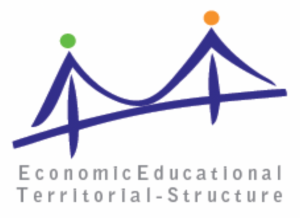
ET-struct – Economic Educational Territorial-Structure
| Program | Interreg CENTRAL EUROPE |
| Project name |
Economic Educational Territorial-Structure |
| Project acronym |
ET-struct |
| Project partners |
Vienna Board of Education, European Office (AT) Vienna Business Agency (AT) Ministry of Education, Science and Cultural Affairs Mecklenburg-Vorpommern (DE) Training and Education Centre of Trade and Industry/Schwerin (DE) City of Hranice (CZ) Secondary Technical School and Vocational Apprentice Training Centre, Hranice (CZ) Statutory City of Karviná (CZ) University of Economy/Bydgoszcz (PL) Lower Silesian Vocational Information and Teacher Training Center in Wałbrzych (PL) BSC – Business support centre ltd Kranj (SLO) Institute for Adult Education Kočevje (SLO) Development and Research Centre Novo mesto (SLO) Modena Formazione (IT) CAN, National Confederation of Crafts and Small and Medium-Sized Enterprises/Modena (IT) Veneto Region, Department of Labour/Venice (IT) ENAIP Veneto Regional Agency of Vocational Training(Padova (IT) Association of Students-Economists of Zakarpattya/Uzhorod (UA) |
| Project duration | 01/2010-12/2012 |
The project ET-struct responded to the general lack of coherence between the connection of the educational system to the leading edge of technology and business practices, being one part of the Lisbon employment agenda. Here, there is often a lack of an effective matching process across the interfaces of policy-making, economy and education. Within the labor market, the participating regions were facing three types of problems that were addressed by the transnational cooperation tools: brain drain of young and well-educated people, increasing migrant workforce penetrating the labor markets and weak links between secondary education and changing demands of the labor market.
The partnership concentrated its efforts on the triple helical link by setting up of a permanent territorial management structures ET-Management, which linked the relevant policy, economic and educational partners/stakeholders as well as matched and optimised work force qualifications with the needs of regional economies in an innovative, ongoing, dynamic, flexible, systemic process. These permanent triple helical territorial structures were linked at transnational level in a meta-structure (ET-Joint-Management).
Results
Handbook for teachers
Catalogue Transnational Inventory Criteria
Video Borderless Opportunities


